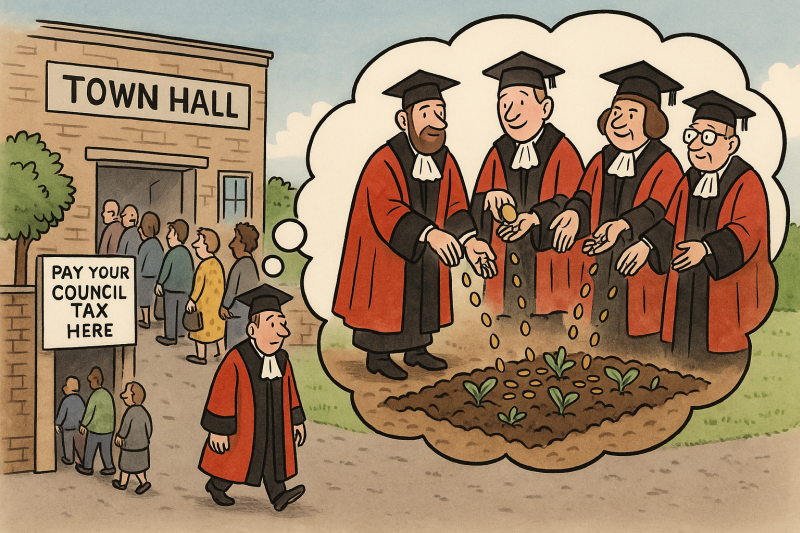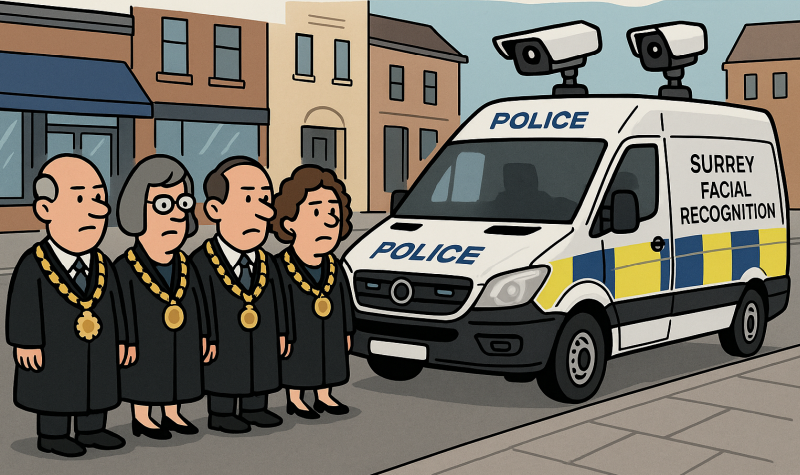Did a fair view prevail on Epsom’s modular homes for the homeless?
The decision by Epsom & Ewell Borough Council 7th November to approve three modular homes for temporary accommodation on Fairview Road has ignited a fierce debate. The council framed this decision as a compassionate and financially prudent response to an acute housing crisis, while residents, local leaders, and some council members aired strong concerns about road safety, infrastructure, and the integrity of the planning process.
A Much-Needed Solution, According to the Council
The council has justified the development as a crucial step in addressing homelessness in the borough, where families are often displaced to temporary accommodations outside Epsom, causing significant disruptions to their lives. With over 160 households in temporary housing and 90 more in costly nightly-paid accommodation outside the borough, the need for local temporary housing solutions is undeniable.
Councillor Clive Woodbridge, (RA Ewell Village) Chair of the Community and Wellbeing Committee, remarked in the council’s press release, “Epsom & Ewell has proportionately one of the highest numbers of homeless households living in temporary accommodation in England. Increasing temporary accommodation provision for local families will not only be life-changing for those being housed now and in the future but will also have a positive impact on the borough as a whole.”
The council also highlighted the economic benefits of the modular homes. According to their press release, the development could reduce the need for expensive nightly-paid accommodation, generating long-term savings. Funding for the project includes £75,000 from the Department for Levelling Up, Housing and Communities’ Brownfield Land Relief Fund. “This project is a decent thing to do,” Councillor Humphrey Reynolds (RA West Ewell) noted during the meeting. “We need to find somewhere for families to live.”
Road Safety and Infrastructure Concerns Dominate the Meeting
The Planning Committee meeting, was chaired by Councillor Steven McCormick, (RA Woodcote and Langley) and the meeting revealed divisions on the issue. Many residents and councillors raised significant concerns about the state of Fairview Road, a narrow, privately maintained road with limited pedestrian pathways, which is already busy with schoolchildren and local traffic.
The Principal Planning Officer, introduced the application, clarifying that the site has existing access from Fairview Road and is currently overgrown, having previously served as a builder’s storage yard. She explained that the modular buildings would “meet a significantly higher standard of temporary accommodation” than current options in the borough.
However, Fairview Road residents, represented by Debbie Ransom, voiced fears about the impact of the development on local traffic and safety. “The road is already hazardous, narrow, and below minimum width standards,” Ransom asserted. “With this development, traffic on Fairview Road could increase by 50%, and the road simply cannot sustain that increase. It is already dangerous for pedestrians and cyclists due to insufficient lighting and narrow paths.”
This sentiment was echoed by Jo Garrod, Headteacher of nearby Glyn School. “Fairview Road is extremely narrow, with no dedicated pavement and poor lighting, which makes it difficult for our students to walk safely,” Garrod said in a formal objection. “Any increase in traffic will heighten the risk of accidents.”
Legal Challenges and Community Impact
The legal right of the council to use Fairview Road as an access point was also questioned. Residents claim that the council lost its legal right to access the site via Fairview Road when it sold an easement to Sainsbury’s for access through an adjacent car park. “The council no longer has the right of access through Fairview Road, and we as residents have refused to grant such an easement,” Ransom stated on behalf of residents. She argued that any additional wear and tear on the road, already funded by resident contributions, would be unacceptable.
Councillor Alison Kelly (Liberal Democrat Stamford) queried whether alternative access routes had been considered, such as Kiln Lane, but the officer responded that the council could only assess the application as submitted. “It’s up to the applicant to propose alternative access, not the council,” she said, adding that Surrey County Council had raised no objections based on road safety.
The discussion revealed frustrations among councillors who felt limited by what they saw as procedural obstacles. “If this was an adopted road, we’d be looking at solutions like yellow lines or even street lighting to improve safety,” Councillor Jan Mason (RA Ruxley) said. “But with this private road, we’re stymied. Surrey County Council has done nothing to mitigate these issues, and I find it difficult to believe that they wouldn’t see a problem here.”
Balancing Homelessness Needs and Community Safety
While the safety issues were widely acknowledged, some councillors, including Kate Chinn (Labour Court), stressed the need to consider the positive impact of the development on the borough’s homeless families. “For many families facing eviction through no fault of their own, the option to stay within the borough is critical,” said Chinn. “These modular homes could offer stability and security, allowing children to stay in their schools and families to keep local support systems.”
Councillor Lucy McIntyre (RA West Ewell) also voiced support, stating, “I understand the residents’ objections, but I believe these units represent a positive step for the borough overall, especially with the council’s focus on homelessness.”
However, other councillors, such as Jan Mason, remained sceptical. “It’s all very well to support homelessness initiatives, but this road simply isn’t suitable for further development,” Mason argued. “Adding three units to this unsuitable road will only make matters worse, and we’ve got no way to improve the infrastructure to make it safer.”
Conditions and Approval Amid Ongoing Concerns
The committee approved the development on a temporary five-year basis, subject to several conditions, including amendments to conditions to reflect a review of the scheme’s necessity and to ensure parking spaces were allocated to individual units. The council stipulated that after five years, a review would assess if there remained a need for such temporary accommodation.
During the discussion, Councillor Phil Neale (RA Cuddington) queried the proposed red colour of the modular units in the CAD drawings, expressing concerns that it might clash with the neighbourhood’s character. Planning officer clarified that the colour was a default setting in the drawings, not the intended final appearance, and that materials and finishes would be selected to harmonise as much as possible with the area.
In the end, the vote carried with seven members supporting the application, zero opposing, and one abstention. Councillor Phil Neale, reflecting on the vote, stated, “We know this is a tough decision, but as councillors, we live in the borough, we know the people, and we understand the difficulties of homelessness. We have to be both compassionate and professional in our decisions, and I believe this project warrants support.”
A Divisive Outcome
The approval of these modular homes highlights a difficult balancing act in Epsom & Ewell, where urgent social needs clash with established community concerns and limited local infrastructure. While the council aims to address a pressing homelessness crisis, residents worry that Fairview Road lacks the capacity and infrastructure to absorb additional traffic and maintain safety.
As this project proceeds, the council will need to navigate ongoing concerns about road access, safety improvements, and potential legal challenges from residents. For now, the decision stands as a testament to the challenges councils face in balancing local development with the needs of vulnerable populations.
Related reports:















